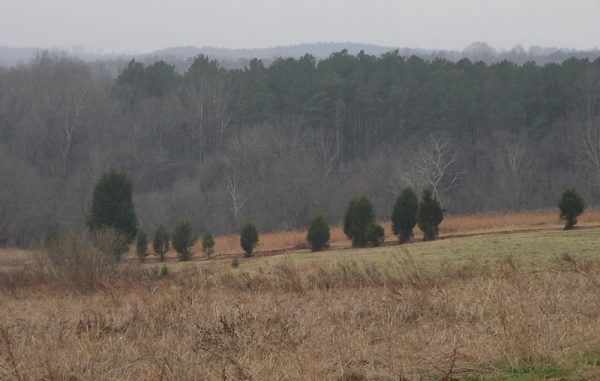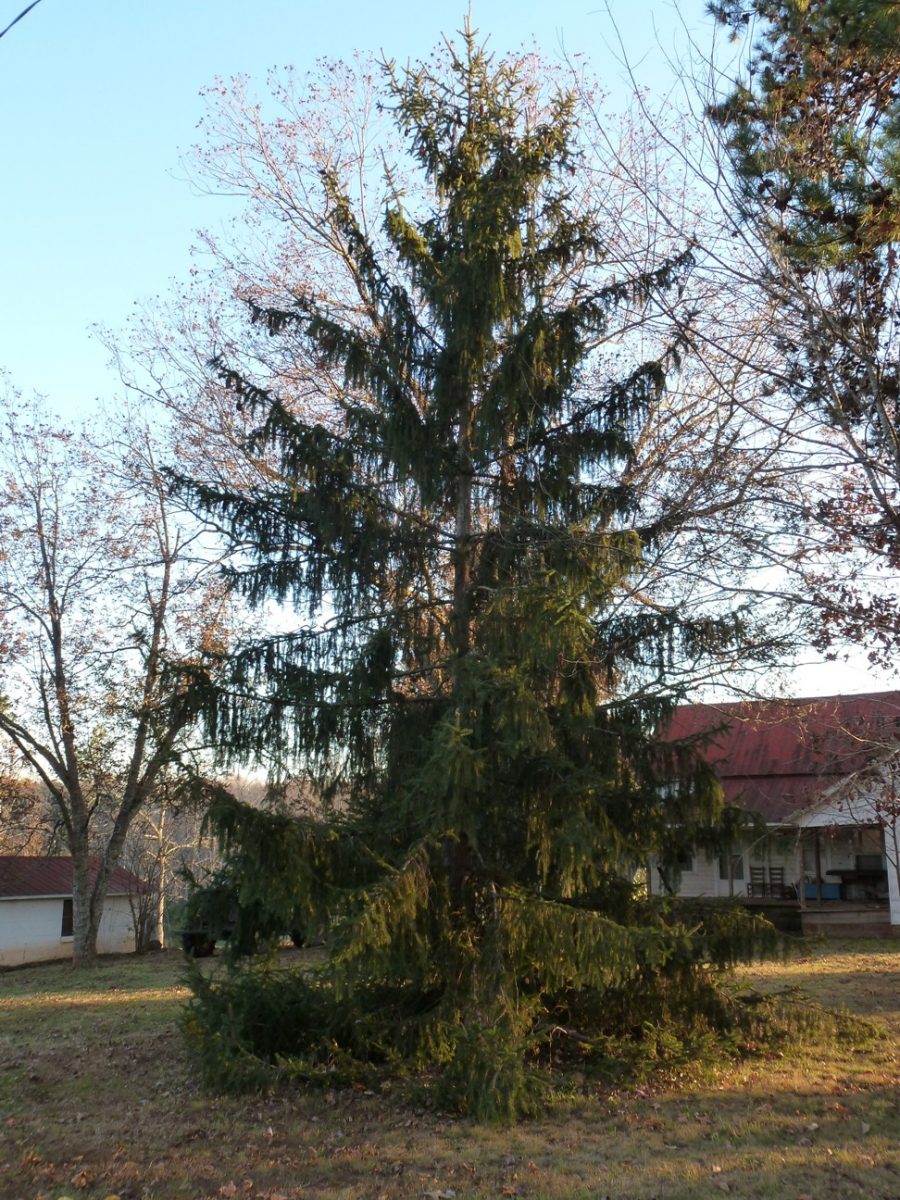How green is your ‘green’ tree?

Last year, we revived a family tradition – we cut a cedar for our Christmas tree. When I was a kid, my parents, my sister and I would bundle up and scour the options along our field margins. Dad was always willing to take the first one we came to. If it was too big, he’d remind us we could simply use the top. If it was sparse on one side, we could turn it toward the wall. A gap between the branches could be hidden with decorations. He was right, of course; none of them was ever perfect. But we were hopeful and stubborn children, so we searched and searched for a suitable tree and tried hard not to be discouraged by its flaws.
The eastern red cedar (Juniperus virginiana) was a logical choice in the Uwharries. Plenty of them sprouted in semi-neglected spaces. We didn’t have to cultivate or maintain them. To procure one, we didn’t have to drive any farther than our property line. For us, spending money on a tree was a privilege reserved for the wealthy or a necessity for city folks who didn’t own a piece of land. We had no idea we were being “green,” but now I think of our cedar trees as local and sustainable.
What if you want a “green” tree but don’t share my sentimental attachment to scrawny, prickly cedars or don’t have access to one? The advice to reduce, reuse and recycle might point you toward a fake tree that can be pressed into service year after year, but in this case, the issues are a little more complicated. Fake trees deplete our limited reserves of fossil fuels at every turn. They’re made of petroleum-based products like plastic and vinyl and manufactured with electricity most likely supplied by coal-fired plants. Petroleum is used to import them from faraway places like China and to haul them to landfills when they get shabby.
Real trees sequester the carbon produced from burning fossil fuels. When a tree is cut, another is planted in its place. Christmas tree farms protect open space, generating income on land that might otherwise be developed. After the holidays, real trees can be used again, in your yard. Prop one up near your feeder – the birds will appreciate an evergreen retreat. (Adorn it with some of the critter-friendly ornaments Crystal Cockman described last week.) You can go a different route and chip it for mulch, or cut the branches and use them to cover marginally hardy plants in your garden. Sound like too much effort? Toss it on a brush pile and let it act as wildlife habitat and enrich the soil as it decomposes.
A Fraser fir sold in the Piedmont probably hasn’t traveled far. Christmas tree farms are a significant part of the economy in the N.C. mountains. The North Carolina Christmas Tree Association estimates 50 million Fraser firs grow on more than 25,000 acres in the state and account for 13 percent of trees sold in the United States. Buying one supports our state’s economy.
If you prefer to go directly to the source, the state has more than 400 choose-and-cut tree growers, with sales estimated at about $6.5 million. This option has the added benefit of getting kids outdoors for a fun activity.
The smell of a real tree in your house is another bonus. Fir’s “bright and uplifting, yet grounding” scent can provide much-needed aromatherapy during the hectic holiday season.
The greenest choice of all is to buy a live tree and plant it in your yard. We got a small Fraser fir in 1988, the first year we were married, and planted it on the north side of my grandparents’ farmhouse. Since then, it has grown nearly a foot each year and is becoming a rather impressive specimen for a Fraser fir in the Piedmont. To mark the end of the millennium, in 1999 we chose a white pine, and it has already surpassed the fir in height and girth.
Winter is an ideal time to plant an evergreen tree in the Piedmont. If you decide to go this route with your Christmas tree, keep the root ball watered and limit its stay inside a warm house. Place it in the coolest spot possible, away from a heat vent, fireplace or woodstove. We kept both of ours out on the porch. It’s a shame to forego the aroma, but sitting inside a cozy house and seeing a decorated tree through the window offers a fresh perspective that makes a Christmas tree even more meaningful.